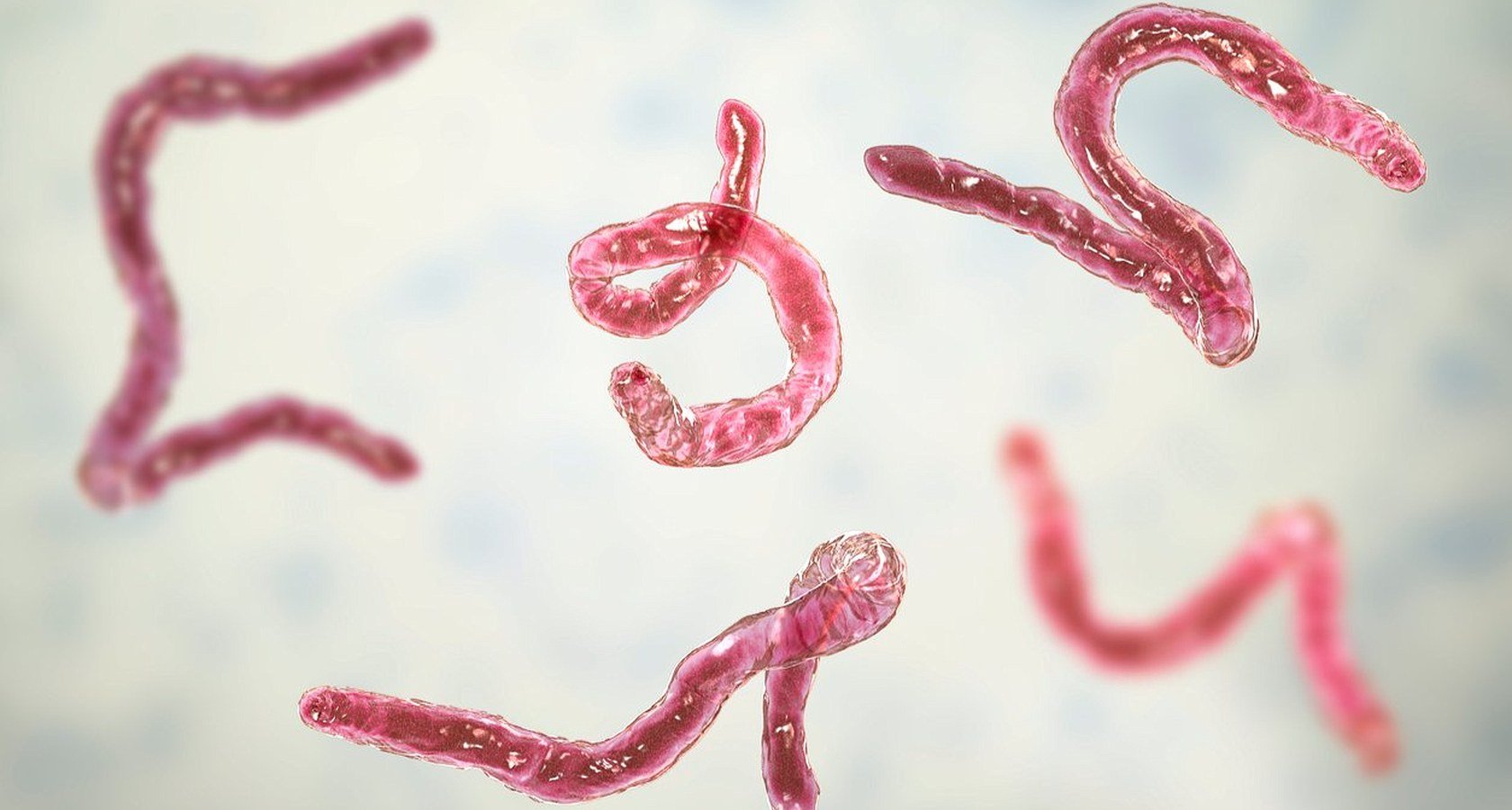There’s a myth that intestinal parasites and parasitic diseases are rare and hard to contract. These microscopic hitchhikers are more common than you think, and they don’t only affect your digestive tract.
Symptoms of a parasite often manifest as gastrointestinal distress, but that’s only the tip of the iceberg. These invaders can wreak havoc on your entire body, from your brain to your liver. Some of them have the potential to cause problems that can last years. Parasites can also contribute to inflammation, immune impairment, and even autoimmune activation.
Helminths and protozoa are the two main types of intestinal parasites. Helminths are multi-cell parasitic worms such as pinworms, hookworms, tapeworms, and roundworms. Protozoa are microscopic, single-cell parasites. Since they’re invisible to the naked eye and don’t always cause immediate symptoms, protozoa are much harder to detect. People can live for years not knowing they’re infected.
How Do You Get Gut Parasites?
Most people don’t realize how easy it is to get infected with a parasite. Hard, protective cysts that surround the parasite allow a long life cycle and easy transmission. Protozoa are especially easy to pick up via the oral route, as all it takes is one cyst to make it into the mouth for infection to occur.
Traveling to countries with underdeveloped sanitation and poor quality drinking water is one way to pick up a parasite, but it isn’t the only way. Outside of travel, some of the most common ways you can get parasites are:
- Swimming — some parasites thrive in water, and chlorine doesn’t kill them all. All it takes is one accidental swallow of water from a public pool, hot tub, or river.

- Food — unwashed produce and undercooked seafood are a perfect hiding spot for parasites.
- Caring for others — assisting others in personal hygiene like bathing and diaper changes puts you at risk for parasite exposure. That makes daycare centers and nursing homes some of the easiest places to pick up a parasite.
- Outdoor activities — you can infect yourself with a parasite if you don’t wash your hands after outdoor activities like gardening or horseback riding.
- Drinking contaminated water — contamination of public drinking water in the US isn’t common, but it does happen. According to the CDC, if you get your water from a well, you’re at a much higher risk. This is especially true after flooding, which can leach contaminated runoff into private wells.
Symptoms of Gut Parasites
Different parasites cause many different symptoms, and some can mimic other infectious diseases. Whether the culprit is a helminth or protozoa, the most recognizable symptoms of a parasite are:
- Gastrointestinal distress — since parasites take up residence in the intestines, this is where the most damage occurs. Diarrhea, constipation, gas, bloating, and nausea are all common symptoms of parasites.
- Weight loss — parasites can cause nausea and poor nutritional absorption, which can lead to weight loss.
- Chronic fatigue syndrome — parasites steal your nutrients and disrupt your intestinal microbiome, resulting in fatigue and brain fog.
- Anemia — some parasites feed on red blood cells, which can cause anemia.1
- Joint pain — there’s a known link between parasite infections and arthritis, which causes joint pain and swelling.2
- Bruxism — the clenching and grinding of teeth, is a little known symptom of parasites that’s most common among children.3
- Fevers — several different parasites can cause fevers. While most common at the time of initial infection, this can also be a symptom of chronic or untreated infection.
Intestinal parasites are also a known cause of some inflammatory and autoimmune diseases. In fact, many autoimmune diseases can have an infectious trigger as the root cause, including parasites, bacteria, viruses, or fungi.4
The Most Common Intestinal Parasites
Most people are familiar with helminths, commonly referred to as intestinal worms. Surprisingly, few people are as familiar with protozoan infections, despite these being some of the most common intestinal parasites in humans. Some of the most common protozoa in the United States include:
Cryptosporidium
Cryptosporidium is a parasite often found in farm animals. It spreads through contaminated water sources. Cryptosporidium has a strong outer shell resistant to chlorine. This makes it notoriously hard to kill. Cryptosporidium is the most common cause of parasitic infection via public pools and water parks.5
Infection is called cryptosporidiosis or “crypto.” It causes watery diarrhea, vomiting, fever, and abdominal pain. Symptoms of crypto usually start 2-10 days after infection.5 The worst of it usually lasts for a week or two, but if left untreated you can get recurrent disease flares well after the initial infection. Importantly, we’ve seen higher rates of Cryptosporidium in some patients with chronic illnesses such as Lyme disease. While the reasons for this aren’t entirely clear, we hypothesize that people with tickborne illnesses are frequently immunosuppressed, and this might put them at higher risk for intestinal parasite infections, as well as other gut infections and imbalances. Since it’s known that Cryptosporidium is more likely to cause chronic illness in people who are immunocompromised, this hypothesis is well-supported.6
Blastocystis
Blastocystis is one of the most common intestinal parasites in the US. Since it doesn’t cause obvious symptoms for everyone, it was originally thought to be non-pathogenic and harmless. We’ve since learned that Blastocystis can cause both acute and chronic illness.7
There is a known link between Blastocystis and irritable bowel syndrome (IBS). It’s also strongly connected to chronic fatigue and joint pain. In 1989, one study found that a very high number of people who tested positive for Blastocystis have also been diagnosed with IBS.8 Chalking their symptoms up to IBS of unknown etiology, Blastocystis was dismissed as a coincidental finding, supporting the impression that it was harmless. Subsequent studies have examined Blastocystis in the absence of other known illnesses, and evidence supports that this parasite is actually capable of causing IBS itself.8
Numerous strains exist, and researchers are still sorting out which ones are most likely to make people sick. But one thing is for sure — not all strains of Blastocystis are the harmless hitchhikers they were once thought to be.
Many providers still adhere to the old school of thought that treatment is unnecessary.9 At CCFM, we follow the most up-to-date research. That’s why we test for Blastocystis and usually treat it when it’s detected, especially if people are having gut issues, fatigue, or joint pain.
Giardia lamblia
Like Cryptosporidium, Giardia lamblia is also chlorine-resistant and it loves water. This parasite lives in the small intestine and causes an illness known as Giardia duodenalis or Giardia intestinalis. Symptoms of giardiasis include fatigue, nausea, diarrhea, gas, bloating, and abdominal cramps. Severe infections can cause dehydration and malnutrition.10
Giardia has some of the most debilitating long-term effects when compared to other parasites. A study published in 2014 found that almost 40% of patients who had Giardia experience residual IBS and chronic fatigue syndrome for up to six years after initial infection.11 Giardia-related bowel inflammation can be severe, disrupting the gut lining and causing increased intestinal permeability (also known as “leaky gut”) for years after.12 Giardia can also persist and cause long-term problems, such as eye disease and arthritis. Untreated Giardia has been found to cause sudden-onset lactose intolerance.13
Since children are more susceptible to Giardia infection, it’s one of the most common reasons of parasitic outbreak among childcare centers.
Iodamoeba bütschlii and Entamoeba histolytica
I. bütschlii and E. histolytica are both amoebas.14 The elderly and immunocompromised are especially vulnerable to infection by amoebas. Outbreaks usually happen in nursing homes and other community living facilities.
Infection of E. histolytica is called amoebiasis.14 Early symptoms of amoebiasis include abdominal cramping and diarrhea. If left untreated, these parasites can travel to the liver and form painful abscesses. They also travel to the brain, lungs, and spleen.15
Iodamoeba bütschlii is an amoeba common in pigs and humans. Much like Blastocystis, it was also previously thought to be non-pathogenic, but there have been challenges to that thought in recent years.16 One study published in Oxfords’ Molecular Biology and Evolution journal reported that high concentrations of Iodamoeba have been linked to episodes of diarrhea and abdominal pain.17 This same study found that Ioadamoeba is an incredibly diverse organism, meaning that different strains may pose a higher risk of causing illness than others.
Considering the unpredictability of Ioadamoeba, we believe the benefit of treating it outweighs the risk of leaving it unchecked.
Toxoplasma Gondii
Toxoplasma Gondii causes a disease known as toxoplasmosis. It’s estimated that up to one third of people living in the US have been infected at some point in their lives.18
T. Gondii is most often transmitted through contaminated drinking water and undercooked meat. Since cats can host the parasite, transmission is possible if hands aren’t washed thoroughly after cleaning their litter boxes.
Symptoms include swollen lymph nodes, fever, sore throat, and muscle aches. T. Gondii can cause inflammation of the brain that results in headaches, vision changes, and even seizures. It can also collect in the lungs and cause a fever, cough, and shortness of breath.
Not everyone who gets infected with T. Gondii becomes ill, but it’s very dangerous for those with weakened immune systems. Pregnant women should be especially cautious, as unborn children are susceptible to birth defects, including hydrocephalus and microcephaly, as a result of toxoplasmosis infection while in utero.19

How to Treat Intestinal Parasites
Different parasites require different treatment methods, so obtaining an accurate diagnosis is critical. Testing involves checking the feces for cysts or larvae. Blood tests can also detect certain parasites and x-rays may be helpful for helminths.
At CCFM, we perform intensive testing for gastrointestinal health. This is frequently a mainstay of our diagnosis and treatments. Since testing for different types of parasites on stool samples is highly variable and requires expertise, sometimes tests can miss an infection. Therefore, our providers treat based on a combination of detailed history, symptoms, and test data. Based on all of this data, your clinician will recommend the best individualized treatments and medications for the infection.
Diet is also key when it comes to treating and preventing parasites. A healthy intestinal microbiome is critical for good health, whether you’ve had exposure to parasites or not. Eating certain foods and avoiding others can help your body prevent and fight intestinal parasites, and restore your gut immune system.
Foods with probiotics and Vitamin C support a healthy microbiome and make you less susceptible to infection. Garlic, beetroot, pumpkin seeds, carrots, and papaya seeds all have anti-parasitic qualities.
If you think you’ve been exposed to parasites, avoid dairy, processed foods, and alcohol. Simple carbs and foods high in sugar give fuel to parasites, so limit them as much as possible.
Don’t Ignore Your Symptoms
In a culture that’s hyper-focused on alleviating symptoms rather than finding the root issue, there’s a concerning gap in the treatment chain.
It’s easy to take a pill and make a symptom go away temporarily. Few stop to ask why the problem happened in the first place. It’s a question that deserves an answer. If left untreated, intestinal parasites can cause lasting damage and chronic illness. If you’re struggling with a chronic disease that has evaded proper diagnosis and treatment, make sure parasites are considered as a possible trigger.
If you’re experiencing symptoms of a parasite infection, click here to book your initial consultation with us.
At CCFM, we see symptoms as clues, not something that should be covered up or ignored. We’re dedicated to uncovering the root cause of your illness and helping you become your healthiest self. Wellness is a journey, but it’s always within reach.
References:
- Gopalakrishnan, S., Anantha Eashwar, V. M., Muthulakshmi, M., & Geetha, A.. (2018). Intestinal parasitic infestations and anemia among urban female school children in Kancheepuram district, Tamil Nadu. Journal of Family Medicine and Primary Care. Retrieved from https://www.ncbi.nlm.nih.gov/pmc/articles/PMC6293916/. Accessed 2 December 2020.
- van Kuijk, A. W. R., Kerstens, P. J. S. M., Perenboom, R. M., Dijkmans, B. A. C. , & Voskuyl, A. E.. (2003). Early-onset polyarthritis as presenting feature of intestinal infection with Strongyloides stercoralis. Rheumatology. Retrieved from https://academic.oup.com/rheumatology/article/42/11/1419/1788272. Accessed 2 December 2020.
- Norouzali Tehrani, M. H., Pestechian, N., Yousefi, H., Sekhavati, H., & Attarzadeh, H. (2010). The Correlation between Intestinal Parasitic Infections and Bruxism among 3-6 Year-Old Children in Isfahan. Dental Research Journal. Retrieved from https://www.ncbi.nlm.nih.gov/pmc/articles/PMC3177368/. Accessed 2 December 2020.
- Burgess, S. L., Gilchrist, C, A., Lynn, T. C., & Petri, Jr., W. A. (2017). Parasitic Protozoa and Interactions with
the Host Intestinal Microbiota. Infection and Immunity. Retrieved from https://iai.asm.org/content/iai/85/8/e00101-17.full.pdf. Accessed 2 December 2020. - CDC (2019). Parasites - Cryptosporidium. Centers for Disease Control and Prevention. Retrieved from https://www.cdc.gov/cryptosporidium/signs-symptoms/?CDC_AAref_Val=https://www.cdc.gov/parasites/crypto/illness.html. Accessed 2 December 2020.
- CDC (2017). Parasites - Cryptosporidium: Illness & Symptoms. Centers for Disease Control and Prevention. Retrieved from https://www.cdc.gov/parasites/crypto/illness.html. Accessed 2 December 2020.
- Blastocystis Research Foundation (2019). Blastocystis Infection More Closely Associated with Diarrhea than E. Histolytica or Giardia. Blastocystis Research Foundation. Retrieved from http://bhomcenter.org/wp/blastocystis-infection-more-closely-associated-with-diarrhea-than-e-histolytica-or-giardia/. Accessed 2 December 2020.
- Boorom, K. F., Smith, H., Nimri, L., Viscogliosi, E., Spanakos, G., Parkar, U., Li, L,-H., Zhou, X.-N., Ok, Ü. Z., Leelayoova, S., & Jones, M. S. (2008). Oh my aching gut: irritable bowel syndrome, Blastocystis, and asymptomatic infection. Parasites & Vectors. Retrieved from https://parasitesandvectors.biomedcentral.com/articles/10.1186/1756-3305-1-40. Accessed 2 December 2020.
- Blastocystis Research Foundation (2019). Physician Report: Metronidazole can Worsen Blastocystis Infection. Blastocystis Research Foundation. Retrieved from http://bhomcenter.org/wp/physician-report-metronidazole-can-worsen-blastocystis-infection/. Accessed 2 December 2020.
- Harvard Medical School (2019). Giardiasis. Harvard Medical School. Retrieved from https://www.health.harvard.edu/a_to_z/giardiasis-a-to-z. Accessed 2 December 2020.
- Hanevik, K., Wensaas, K.-A., Rortveit, G., Eide, G. E., Mørch, & K., Langeland, N. (2014). Irritable Bowel Syndrome and Chronic Fatigue 6 Years After Giardia Infection: A Controlled Prospective Cohort Study. Clinical Infectious Diseases. Retrieved from https://academic.oup.com/cid/article/59/10/1394/2895575. Accessed 2 December 2020.
- Retrieved from https://pubmed.ncbi.nlm.nih.gov/?term=giardia+and+intestinal+permeability.%C2%A0. Accessed 2 December 2020.
- Halliez, M. C.M. & Buret, and A. G. (2013). Extra-intestinal and long term consequences of Giardia duodenalis infections. World Journal of Gastroenterology. Retrieved from https://www.ncbi.nlm.nih.gov/pmc/articles/PMC3870550/. Accessed 2 December 2020.
- Silva Santos, P. H., Santos Barros, R de C., Galvão Gomes, K. V., Alves Nery, A., & Casotti, C. A. (2017). Prevalence of intestinal parasitosis and associated factors among the elderly. Revista Brasileira de Geriatria e Gerontologia. Retrieved from https://www.scielo.br/pdf/rbgg/v20n2/1809-9823-rbgg-20-02-00244.pdf. Accessed 2 December 2020.
- Kantor, M., Abrantes, A., Estevez, A., Schiller, A., Torrent, J., Gascon, J., Hernandez, R., & Ochner, C. (2018). Entamoeba Histolytica: Updates in Clinical Manifestation, Pathogenesis, and Vaccine Development. Canadian Journal of Gastroenterology and Hepatology. Retrieved from https://www.ncbi.nlm.nih.gov/pmc/articles/PMC6304615/. Accessed 2 December 2020.
- Cohen, J. (1996). Metronidazole to clear intestinal parasites. The Lancet. Retrieved from https://www.thelancet.com/journals/lancet/article/PIIS0140-6736(05)65588-2/fulltext. Accessed 2 December 2020.
- Stensvold, C. R., Lebbad, M., & Clark, C. G. (2012). Last of the Human Protists: The Phylogeny and Genetic Diversity of Iodamoeba. Molecular Biology and Evolution. Retrieved from https://academic.oup.com/mbe/article/29/1/39/1750569. Accessed 2 December 2020.
- Hill, D. & Dubey, J. P. (2002). Toxoplasma gondii: transmission, diagnosis and prevention. Clinical Microbiology and Infection. Retrieved from https://www.sciencedirect.com/science/article/pii/S1198743X1462509X. Accessed 2 December 2020.
- McAuley, J. B. (2014). Congenital Toxoplasmosis. Journal of the Pediatric Infectious Disease Society. Retrieved from https://www.ncbi.nlm.nih.gov/pmc/articles/PMC4164182/. Accessed 2 December 2020.






